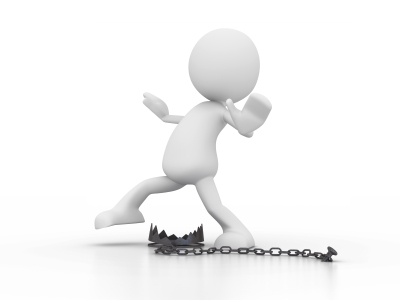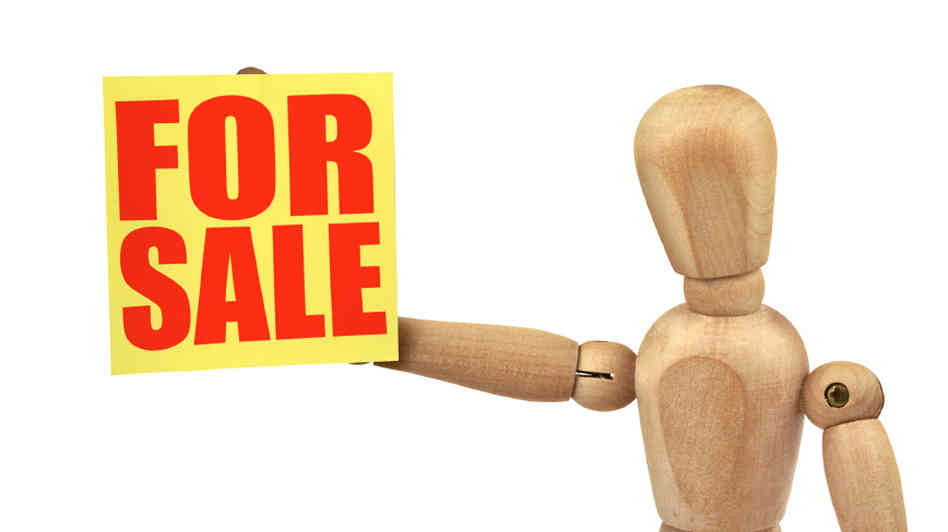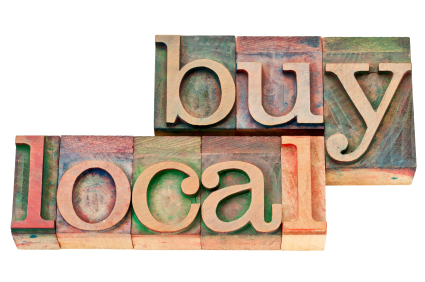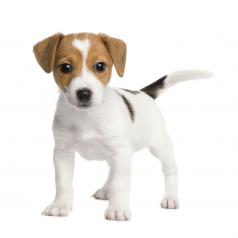Art News and Updates from Gallereo
All the latest news from the art world, as well as what's happening here at Gallereo. If you've built a gallery at Gallereo, let us know about your experience and you and your site could feature in our blog in the coming weeks.
Friday 15th November 2013Choosing Your Portfolio Pieces for Gallereo

No matter what type of artist you are or where you choose to exhibit your work, the single most important choice you have to make is which pieces to include in your portfolio. Selecting the work to include on your Gallereo page is almost important (if not more), because the body of work you choose to show potential customers will have a direct impact on their opinion of you and your body of work as whole, and so whether or not they want to buy one of your pieces.
Naturally, you're going to struggle with it. That's ok - it's a testament to your emotional connection to your work that you have a hard time sorting out what to include. Fortunately, Gallereo is almost infinitely flexible in the way you choose to organise your personal page. This allows you to categorise your work into various distinct bodies, which can be very useful if you've experimented with different types of media or with different styles within media. If you tend to find yourself working in series', then you've almost got a built-in categorisation system. The same applies if your style has evolved over time but you still want to sell some of your older work.
When it comes to selecting the pieces you want to show, remember that you obviously want to include the best of the best on the first page people see. While you have the option of including every single piece of work you've ever done, they're not likely to all show off your talents equally. It can be agonizing to make decisions about which pieces make the cut and which don't, but it's always worth it as it helps you to prioritise which pieces you feel are your best work. But beyond that, do you really have to choose which is "best"?
If you've already got a portfolio pre-Gallereo, think about the choices you made when you were selecting. Do the pieces still represent your style? Do they still represent your talent level? Do they still accurately represent that most-elusive thing, your artistic self-expression? You'll probably want to go back and include some additional pieces, and leave of the current ones out, but that's ok.
The important thing to remember is not to fall for the temptation to include everything you've ever done. You may think, 'Oh, well, it's all digital, I don't have to worry about space constraints!' - and you're right, but you do have to worry about the attention span of your audience. When another artist website is only a few clicks away, you have to make sure that you're captivating your audience or they're just going to wind up somewhere else - and showing 500 of your pieces on the front page is more likely to push them away than pull them in.
So plan carefully, and put your best foot forwards. Give viewers the chance to dig in deeper to your work if they want to, but pick the best of the best to put on your front page as a showcase of your range of abilities.
Posted on November 15th 2013 on 09:03pm
0 Comments
Wednesday 13th November 2013Tweak Your Artist Bio To Draw In Buyers

One of the most dreaded aspects of preparing a portfolio and setting up your Gallereo page for many artists is when it finally comes time to write your artist bio page. As many visual artists aren't nearly as comfortable with the written word as they are their own medium of choice, it can become a daunting proposition, and many artists wind up selling themselves short with either a poorly-written bio or simply not including information that people find interesting. Fortunately, we're here to give you some tips and pointers that will help ensure that your bio page shines just as much as your favourite masterpiece.
First of all, let's go over the typical and boring factual stuff. Now before you all groan, there's a good reason that this stuff is typical - people tend to want to know it, and they may even wonder at your reasoning if you decide not to include it. This includes things like any formal art school training you've had, how many years you've been working in your chosen medium, any gallery shows you may have had, awards you've won, and juried competitions you've won.
However, as any good artist knows, the most technically-excellent work is worthless if it doesn't have any flair or style that makes it appealing. Savour is what makes life worth living, and since this bio is all about your artistic life, you'll be doing yourself a disservice if you don't include some. Tell us about your inspirations, your passions, and what makes you do the things you do the way you do them, but do it in a way that's uniquely your own. Humanise your story. It will make you seem far more real to your potential buyers than a bulleted list of your education and accomplishments.
The crucial point to remember is that people aren't likely to want to read an entire essay about your artistic life (at least, not at this stage in your career). If you're inspired enough to write something in a long format, then by all means do so, but host it on a separate page and link to it from your bio page so that readers who want to dig deeper can, but those who just want the highlights don't have to read everything that ever happened to your artistic life.
This is where the crucial balance comes in - you have to entice your readers, hint at your motivations, draw a sketch of who you are - save the photorealistic oil painting of your life for another place and time.
Posted on November 13th 2013 on 04:09am
0 Comments
Thursday 07th November 2013How to Boost Your Selling Price

In every aspect of life, value is a very tricky thing to pin down, but that goes double for the art world. The value of an artwork is distinct from the actual selling price, but they are definitely related. As an artist who is just starting to sell work online - or perhaps just starting to sell at all - it can be very difficult to decide how to price your art. We've discussed some basics before, so please swing back and check out our post on the topic here, but what happens if you're not happy with the price point you're selling your work at?
Conventional wisdom would tell you that you simply have to wait, and let your fame spread so that your work will accrue value - but remember, typically when you see artworks sold at auction for seven figure price tags, the artist isn't actually receiving any of that money. New pieces are likely to command much higher prices at that point,but for those of us who are impatiently stuck in the starving artist phase, this is scant comfort. Fortunately, there are some things you can do to immediately boost the sale value of your artwork.
First of all, it's important to understand what makes artwork valuable beyond the pure artistic merit of the piece. Essentially, it comes down to the story and information behind the piece that adds character and value. Part of a good piece is the experience a viewer has when they look at it, and every additional aspect of detail that can be added to the piece and its history will enrich the experience of the viewer. Keeping that in mind, one of the most important things you can do to add character to a piece is to sign it. It sounds simple, but if you had two pieces side by side of equal artistic merit and one was signed and one wasn't, which would you pick? Titling and dating work along similar principles, and if your career really takes off, you'll be very happy to have that information.
If you work in a digital medium or something similar where prints are your main result, print a limited run and number them. Prints are often sold in runs of 50, 100, or 250, although really you can sell as many as you like - but remember that the fewer in the print run, the more value each print acquires.
Finally, be sure to include the story of the piece. What inspired it, what it means to you, where you did it, all of these things help create a narrative around the piece and enhance the experience of the viewer each time they look at the piece. Nothing is ever created in a vacuum, and viewers know that - help satisfy their curiousity, and you'll be raising your prices in no time.
Posted on November 07th 2013 on 05:35pm
0 Comments
Tuesday 05th November 2013Important Skills for Online Art Sales
We artists are a complicated bunch, without a doubt. Passionate, creative and sometimes mercurial to a fault, these traits are nevertheless what drive us to become artists in the first place. When it finally comes time to sell our work, however, things can get far more complicated than most of us are prepared for. The skills that make us great artists don't necessarily also make us appealing to art buyers. Some of us are naturally good at liaising with buys, and some of us lucky enough to overcome our foibles based on raw talent alone, but some of us (ok, a lot of us) have to actively work at making sales.
One of the most important things for artists to embrace is the power of networking. I know that it sounds a bit like business jargon, but really what it comes down to is the ability to make useful human connections. A great many artists are introverts, which can make it an agony to put ourselves out there in the public sphere, but it's important to bite the bullet and get used to it. Few famous artists can get away with being recluses, and fewer still can become famous from seclusion. Get out there and promote yourself, whether it's online or in the real world, and you'll start to raise your profile even as you gain confidence.
Hand in hand with self-promotion goes the ability to write well about your work. This is doubly true for those who are shy about in-person self-promotion, as the ideas are the most important part. If potential buyers don't understand your vision or where you're coming from, they're going to wander off in favour of an artist who can speak fluently about their own work. It takes practice, for many of us, but the practice is worth it - and if you publish everything you write online, you'll probably start seeing some SEO and traffic benefits as well!
When you go through both of these steps, it's important to think about how you present yourself. Again, I hate to fall back on business speak as business is often such a dirty word in the art community, but you have to accept the fact that good sales come from clever business skills as much as - or more than - raw talent. Consider your personal branding - in effect, the personality you present to the world. People know Andy Warhol as much for his personality as much as his art; the same applies to Salvador Dali and a host of other famous artists. That's not to say you should grow a funny moustache (although who knows, it might help) or dye your hair platinum blonde, but starting to become aware of how others perceive you can make a huge difference in your sales.
Posted on November 05th 2013 on 07:41pm
0 Comments
Friday 01st November 2013Use Image-based SEO to Drive Traffic
 As you've learned by now, search engine optimisation is one of the most important tools for artists to use when selling artwork online. Unavoidably, most SEO tips and tricks are geared towards online text, simply because that's how keywords are entered into search engines - but with a bit of careful planning, it's possible to ensure that your artwork appears near the start of any image searches. Most of these tips will be specifically targeted towards Google rankings, as Google is the number one source of search engine traffic by a huge margin, but they should help your images rank more highly on other search engines as well. We're going to assume that you've followed our advice from past posts and taken steps to ensure that your on-page text (titles, descriptions, etc) about each image is as descriptive as possible.
As you've learned by now, search engine optimisation is one of the most important tools for artists to use when selling artwork online. Unavoidably, most SEO tips and tricks are geared towards online text, simply because that's how keywords are entered into search engines - but with a bit of careful planning, it's possible to ensure that your artwork appears near the start of any image searches. Most of these tips will be specifically targeted towards Google rankings, as Google is the number one source of search engine traffic by a huge margin, but they should help your images rank more highly on other search engines as well. We're going to assume that you've followed our advice from past posts and taken steps to ensure that your on-page text (titles, descriptions, etc) about each image is as descriptive as possible.
Going above and beyond the on-page text starts with how you actually save the images themselves. Google always appreciates a fast-loading page, so images with smaller file sizes tend to get more preferential rankings. Those of you with even a passing awareness of digital images will know that there is a correlation between file size and image quality, and naturally you don't want to try to use a low-quality image to sell your artwork. The heart of this balance lies in your image compression settings. The JPEG file format can strike an amazing balance between image size and quality, but in 99/100 cases, you can get away with using a compression/quality setting of 80 or even 70, which saves a huge amount of file size when compared to a setting of 100. Experiment, and see what balance looks best on your work - in some cases, you may even be able to get away with a setting of 60 without a noticeable loss of quality.
Once you've optimised your settings, be sure to choose a filename carefully. Use as much description as possible, including your name and the title of the work at the very least, and consider including the medium, the date, and where it was created. But instead of making it all one long word that Google may have difficulty parsing, use dashes to separate words, as Google treats a dash in a filename as equivalent to a space.
Finally, make sure that you set what's known as the 'ALT' text for your images. In its original purpose, ALT text is intended to be read by navigation-assistance programs for blind users in place of images, but it has found another use in the SEO field. Include all your descriptive information in the ALT field as well, although try to switch up the formatting of the text so that Google doesn't consider it a duplication of other content on your page.
Posted on November 01st 2013 on 05:28pm
0 Comments
Wednesday 30th October 2013Protecting Your Artwork Online

As an artist who sells work online, you've got images of all aspects of your work all throughout your Gallero gallery - it's the only way to sell online, after all. But how do you prevent people from taking your images and using them without permission, or simply prnting out a copy of them and framing that instead of buying the original from you? It can be an extremely frustrating problem, and one that doesn't always have an easy solution, since to a certain extent you probably do want people to share your images to help you grow in popularity. There are a few things you can do that will minimise the problem while still giving you that viral popularity boost, so let's take a look at the more popular options.
First of all, the best practice for online images of your work is carefully control the size of your output. Images on the web are displayed at 72 pixels per inch, more than enough to accurately show off your work on-screen - but if you try to print out these images, they wind up looking like pixelated junk, as printers typicall operate at 300 pixels per inch. If you constrain your image sizes to under 1000pixels, you'll get a great on-screen representation, but anyone who tries to steal your work and print it out will wind up with a 3-inch image that they can barely see properly.
Another popular tactic, generally combined with the size control technique listed above is to watermark your images. A watermark is a marking of some kind placed over the image in such a way that it doesn't interfere overmuch with the appreciation of the image itself, but makes it every clear that the image has an author and that the watermarked copy of the image has been used outside of its originally intended purpose. Most watermarks consist of the artist's name and/or logomark superimposed over the centre of the image in a very light opacity, not to be confused with an image-based byline in the bottom left or right corners which can be easily cropped away. If you choose to use a watermark, make sure that you note in your Gallereo descriptions that purchased artworks do not contain the watermark.
Finally, one of the most foolproof ways to ensure nobody is using your artwork online without your permission is to employ an intellectual property protection service. These companies have sophisticated software to crawl the web for examples of infringement, and scary legal teams dedicated to rooting out theft. Of course, this isn't always an option for those of us who are still in the 'starving artist' phase of our careers, but it is extremely effective. If you can't afford to use such a service, there is an alternative, although it requires some work by hand. Google has recently debuted a new type of image search that actually lets you search using images as your search terms. You upload a copy of your artwork image, and it searches the web for other instances of that image. Simply visit
www.google.com/imghp to test it out for yourself!
Posted on October 30th 2013 on 06:17pm
0 Comments
Saturday 26th October 2013What to Avoid on Your Gallereo Blog

Confused? That's OK! Most of these types of articles tend to offer you tips on what to do - but we thought we'd switch things up today and give you some advice on what to avoid on your blog. We don't really want to tell you want to do, as your blog is your own - but if you avoid these pitfalls, your general creativity will fill in the rest!
Arguably the most important thing to avoid on your blog is pointless posting. Pointless posts typically occur when you haven't decided what you're hoping to get out of running your blog. Fortunately, this is pretty easy to fix with a few moments thought. Increasing sales of your artwork is probably the most important goal for your blog, but there are others as well, ranging from increasing your exposure to demonstrating intelligent views to reaching out to your fans. If you keep those goals firmly in mind, you'll cut down on pointless posts that don't really move you closer to them, and instantly start generating ideas that will help you achieve them.
The next thing to avoid is posting, like, you know, whenever. The most successful blogs have a schedule, and they stick to it - you can do the same with your Gallereo blog. Just make sure that you set realistic expectations. If you hate writing, it's not likely that you're going to be making five posts a week forever, and even if you love writing, life tends to get in the way. Whatever you decide your posting schedule should be, stick to it.
Be sure to avoid compartmentalising. If you've been following our advice series, you know by now that it's vital to have social media accounts in addition to your Gallereo blog. To use them to best effect, you want to make sure that all your social media accounts and your blog play nice with one another. The more you mention Facebook on your blog and your blog on your Twitter and your Twitter on your Facebook, the better integrated they'll be, and the better your fan community will function. If your Facebook fans don't know what your blog fans know, or vice versa, you'll start running into problems.
Finally, the most important thing to avoid is too much self-promotion. This might seem like a paradox, but if you want to keep your fans engaged with your blog and coming back regularly, you'll need to post content about more than just yourself. Not that you should feel bad about posting about you and your work, upcoming shows or events, etc, but rather that you should space it out with interesting content about the art world in general. Things you love, things you hate, things that inspire you and things that speak to you are all good post ideas that will help space out the posts about you while both keeping your readers engaged and avoiding the pointless posting problem. Happy blogging!
Posted on October 26th 2013 on 07:51pm
0 Comments
Wednesday 23rd October 2013A Guide to Pricing Your Art Properly

As an aspiring artist hoping to start making some sales, one of the most important considerations is also one of the most difficult: how to price your art properly. Properly means a few things, of course, but primarily it's about striking a balance that fairly compensates you for your work while still appealing to both art collectors and public buyers. Don't be seduced by the idea of starting out selling works for five figures, as this can set you up for disappointment, but with skill and perseverance you will be able to work your way up there! We've prepared a few tips to help you decide how to price your work to meet the right balance for your background and skill set.
The first consideration when it comes to pricing is whether you're selling original works or prints. If you're working in a digital medium, this choice is essentially made for you, unless you want to sell only a single copy of a digital work - although this is a fairly uncommon practice. If you work in a physical medium, it's possible to sell both prints and the original itself, which can dramatically increase your income from a single piece. Prints are naturally priced much lower than originals, but this can fluctuate based on a number of factors. The cost of the original itself can increase the cost of prints, as can offering a 'limited run' of 250 or 500 prints.
For new artists, a good general pricing rule is to take into account the cost of your materials and combine it with a reasonable hourly wage for the amount of time you spent working on the piece itself. For example, if your materials cost $75, and you spent 25 hours on a piece at $20 per hour, the final price for the piece would be $575. It can be difficult to determine a fair hourly wage, but if you're hoping to use your art as a means to support yourself, ensure that you strike a fair balance between saleability and the ability to keep a roof over your head.
Another useful tip is to take a look at what other artists who have comparable amounts of skill and experience are charging for their work. While it can be very difficult to objectively assess comparable skill, taking a look around the web and through various local galleries can help give you a sense of the general price point for works that are similar in terms of size and style.
Keeping all these tips in mind, one of the most useful things you can do to increase your prices successfully is to gradually increase your selling price until your sales slow down, then lower your prices. If you want to get the most out of your work, you must constantly pay attention to your sales and keep a finger on the pulse of the art world in general.
Posted on October 23rd 2013 on 10:01pm
0 Comments
Friday 18th October 2013Connecting Online with Local Art Buyers

As an artist hoping to sell your work online, you probably haven't given much of a thought to your local sales prospects. Showing your work in local galleries can be an incredibly difficult process, and even after a great deal of work it doesn't guarantee any of your pieces will actually sell. But it's undeniable that developing a local fanbase can dramatically improve your chances of successfully climbing your way up in the art world. Fortunately, it's possible to combine your online strategy with an offline one to maximise your sales potential.
We've been talking a lot about the value of SEO for artists lately, and with good reason - it's one of the most important tools to utilise when you're trying to sell your artwork online. But there's a side to search engines that industry players like Google are just beginning to get a handle on, which is known local search. This means that there are a great deal of opportunities for artists who are savvy enough to capitalise on it - and it's fairly easy to do.
As you may or may not have guessed, it would be very difficult to become highly ranked in search engines for generic terms such as 'nature photographer' or 'landscape painter' - but when you begin to couple those terms with local city/town/region names, the prospects begin to get more favourable. Instead of being discouraged by a slow response to your SEO efforts, you can choose to gradually build up your prestige by beginning at a more local level, and you can target these terms fairly easily with a bit of quick modification to your Gallereo page and the titles and descriptions of your artwork.
Consider including the location of your pieces in your titles, even if only as part of the short title description we suggested in our main 'SEO for Artists' post - but be sure to include them in the longer descriptions no matter what. This can quickly help you begin ranking for localised search keywords, and as people begin to think of you as a London-based artist (or wherever you happen to be from), they'll begin mentioning that when they link to your Gallereo page, and that will boost your local rankings even more. Many art buyers are keen to support their local artists and art communities, so some careful thought into how you choose to name and identify your artwork can make a huge difference in your success! Good luck!
Posted on October 18th 2013 on 04:43pm
0 Comments
Wednesday 16th October 2013Don't Miss This One-of-a-kind London Exhibit

One of the most intriguing art shows to hit London this year opened recently at south London's Gallery on the Corner, with a very special goal in mind - and showcasing some very special artists. Each of the more than 30 artists being showcased are all of the canine variety, and each has created a special series of minimalist masterpieces for sale, with the proceeds going to the aid of the Battersea Dogs and Cats Home, a nearby rescue shelter.
The art world has always been fascinated by animals who paint, from the great apes such as gorillas and chimpanzees to elephants and even cats - but the organizers of this show, Tom Webber and Tom Lakeman, have put together the very first British exhibition of canine artworks. Each piece is available for sale, with a framed original work costing £100, with the full proceeds going to aid the rescue shelter. First opening night was October 11, and over 140 art buffs (and in many cases, their canine counterparts) stopped by to appreciate the works and help out the shelter.
In order to create their masterworks, the dogs were each given a well-stocked food bowl, complete with oil pastel surreptitiously attached to the side. The entire setup is placed on a piece of blank paper, and as the hungry pups chow down on their meals, the bowl is pushed across the paper in various stylish sweeps of line. The final pieces are decidedly minimalist, but also - perhaps a touch unexpectedly - quite appealing in their enthusiasm. Naturally, the more excited the dog is about its meal, the more expressive and dynamic the final piece will be.
The show only runs until October 20th, so be sure to swing by if you're in the neighbourhood and see these truly unique creations. The gallery is also dog-friendly, so be sure to bring along all your canine friends - and for an extra special treat, they can create their own masterpieces right there in the gallery! If you happen to find a framed piece you really enjoy, remember that all the funds raised go straight to the aid of the rescued animals at the Battersea Dogs and Cats Home.
Posted on October 16th 2013 on 12:04pm
0 Comments
 No matter what type of artist you are or where you choose to exhibit your work, the single most important choice you have to make is which pieces to include in your portfolio. Selecting the work to include on your Gallereo page is almost important (if not more), because the body of work you choose to show potential customers will have a direct impact on their opinion of you and your body of work as whole, and so whether or not they want to buy one of your pieces.
No matter what type of artist you are or where you choose to exhibit your work, the single most important choice you have to make is which pieces to include in your portfolio. Selecting the work to include on your Gallereo page is almost important (if not more), because the body of work you choose to show potential customers will have a direct impact on their opinion of you and your body of work as whole, and so whether or not they want to buy one of your pieces. One of the most dreaded aspects of preparing a portfolio and setting up your Gallereo page for many artists is when it finally comes time to write your artist bio page. As many visual artists aren't nearly as comfortable with the written word as they are their own medium of choice, it can become a daunting proposition, and many artists wind up selling themselves short with either a poorly-written bio or simply not including information that people find interesting. Fortunately, we're here to give you some tips and pointers that will help ensure that your bio page shines just as much as your favourite masterpiece.
One of the most dreaded aspects of preparing a portfolio and setting up your Gallereo page for many artists is when it finally comes time to write your artist bio page. As many visual artists aren't nearly as comfortable with the written word as they are their own medium of choice, it can become a daunting proposition, and many artists wind up selling themselves short with either a poorly-written bio or simply not including information that people find interesting. Fortunately, we're here to give you some tips and pointers that will help ensure that your bio page shines just as much as your favourite masterpiece. In every aspect of life, value is a very tricky thing to pin down, but that goes double for the art world. The value of an artwork is distinct from the actual selling price, but they are definitely related. As an artist who is just starting to sell work online - or perhaps just starting to sell at all - it can be very difficult to decide how to price your art. We've discussed some basics before, so please swing back and check out our post on the topic here, but what happens if you're not happy with the price point you're selling your work at?
In every aspect of life, value is a very tricky thing to pin down, but that goes double for the art world. The value of an artwork is distinct from the actual selling price, but they are definitely related. As an artist who is just starting to sell work online - or perhaps just starting to sell at all - it can be very difficult to decide how to price your art. We've discussed some basics before, so please swing back and check out our post on the topic here, but what happens if you're not happy with the price point you're selling your work at? We artists are a complicated bunch, without a doubt. Passionate, creative and sometimes mercurial to a fault, these traits are nevertheless what drive us to become artists in the first place. When it finally comes time to sell our work, however, things can get far more complicated than most of us are prepared for. The skills that make us great artists don't necessarily also make us appealing to art buyers. Some of us are naturally good at liaising with buys, and some of us lucky enough to overcome our foibles based on raw talent alone, but some of us (ok, a lot of us) have to actively work at making sales.
We artists are a complicated bunch, without a doubt. Passionate, creative and sometimes mercurial to a fault, these traits are nevertheless what drive us to become artists in the first place. When it finally comes time to sell our work, however, things can get far more complicated than most of us are prepared for. The skills that make us great artists don't necessarily also make us appealing to art buyers. Some of us are naturally good at liaising with buys, and some of us lucky enough to overcome our foibles based on raw talent alone, but some of us (ok, a lot of us) have to actively work at making sales.  As you've learned by now, search engine optimisation is one of the most important tools for artists to use when selling artwork online. Unavoidably, most SEO tips and tricks are geared towards online text, simply because that's how keywords are entered into search engines - but with a bit of careful planning, it's possible to ensure that your artwork appears near the start of any image searches. Most of these tips will be specifically targeted towards Google rankings, as Google is the number one source of search engine traffic by a huge margin, but they should help your images rank more highly on other search engines as well. We're going to assume that you've followed our advice from past posts and taken steps to ensure that your on-page text (titles, descriptions, etc) about each image is as descriptive as possible.
As you've learned by now, search engine optimisation is one of the most important tools for artists to use when selling artwork online. Unavoidably, most SEO tips and tricks are geared towards online text, simply because that's how keywords are entered into search engines - but with a bit of careful planning, it's possible to ensure that your artwork appears near the start of any image searches. Most of these tips will be specifically targeted towards Google rankings, as Google is the number one source of search engine traffic by a huge margin, but they should help your images rank more highly on other search engines as well. We're going to assume that you've followed our advice from past posts and taken steps to ensure that your on-page text (titles, descriptions, etc) about each image is as descriptive as possible.  As an artist who sells work online, you've got images of all aspects of your work all throughout your Gallero gallery - it's the only way to sell online, after all. But how do you prevent people from taking your images and using them without permission, or simply prnting out a copy of them and framing that instead of buying the original from you? It can be an extremely frustrating problem, and one that doesn't always have an easy solution, since to a certain extent you probably do want people to share your images to help you grow in popularity. There are a few things you can do that will minimise the problem while still giving you that viral popularity boost, so let's take a look at the more popular options.
As an artist who sells work online, you've got images of all aspects of your work all throughout your Gallero gallery - it's the only way to sell online, after all. But how do you prevent people from taking your images and using them without permission, or simply prnting out a copy of them and framing that instead of buying the original from you? It can be an extremely frustrating problem, and one that doesn't always have an easy solution, since to a certain extent you probably do want people to share your images to help you grow in popularity. There are a few things you can do that will minimise the problem while still giving you that viral popularity boost, so let's take a look at the more popular options. Confused? That's OK! Most of these types of articles tend to offer you tips on what to do - but we thought we'd switch things up today and give you some advice on what to avoid on your blog. We don't really want to tell you want to do, as your blog is your own - but if you avoid these pitfalls, your general creativity will fill in the rest!
Confused? That's OK! Most of these types of articles tend to offer you tips on what to do - but we thought we'd switch things up today and give you some advice on what to avoid on your blog. We don't really want to tell you want to do, as your blog is your own - but if you avoid these pitfalls, your general creativity will fill in the rest! As an aspiring artist hoping to start making some sales, one of the most important considerations is also one of the most difficult: how to price your art properly. Properly means a few things, of course, but primarily it's about striking a balance that fairly compensates you for your work while still appealing to both art collectors and public buyers. Don't be seduced by the idea of starting out selling works for five figures, as this can set you up for disappointment, but with skill and perseverance you will be able to work your way up there! We've prepared a few tips to help you decide how to price your work to meet the right balance for your background and skill set.
As an aspiring artist hoping to start making some sales, one of the most important considerations is also one of the most difficult: how to price your art properly. Properly means a few things, of course, but primarily it's about striking a balance that fairly compensates you for your work while still appealing to both art collectors and public buyers. Don't be seduced by the idea of starting out selling works for five figures, as this can set you up for disappointment, but with skill and perseverance you will be able to work your way up there! We've prepared a few tips to help you decide how to price your work to meet the right balance for your background and skill set. As an artist hoping to sell your work online, you probably haven't given much of a thought to your local sales prospects. Showing your work in local galleries can be an incredibly difficult process, and even after a great deal of work it doesn't guarantee any of your pieces will actually sell. But it's undeniable that developing a local fanbase can dramatically improve your chances of successfully climbing your way up in the art world. Fortunately, it's possible to combine your online strategy with an offline one to maximise your sales potential.
As an artist hoping to sell your work online, you probably haven't given much of a thought to your local sales prospects. Showing your work in local galleries can be an incredibly difficult process, and even after a great deal of work it doesn't guarantee any of your pieces will actually sell. But it's undeniable that developing a local fanbase can dramatically improve your chances of successfully climbing your way up in the art world. Fortunately, it's possible to combine your online strategy with an offline one to maximise your sales potential. One of the most intriguing art shows to hit London this year opened recently at south London's Gallery on the Corner, with a very special goal in mind - and showcasing some very special artists. Each of the more than 30 artists being showcased are all of the canine variety, and each has created a special series of minimalist masterpieces for sale, with the proceeds going to the aid of the Battersea Dogs and Cats Home, a nearby rescue shelter.
One of the most intriguing art shows to hit London this year opened recently at south London's Gallery on the Corner, with a very special goal in mind - and showcasing some very special artists. Each of the more than 30 artists being showcased are all of the canine variety, and each has created a special series of minimalist masterpieces for sale, with the proceeds going to the aid of the Battersea Dogs and Cats Home, a nearby rescue shelter.



